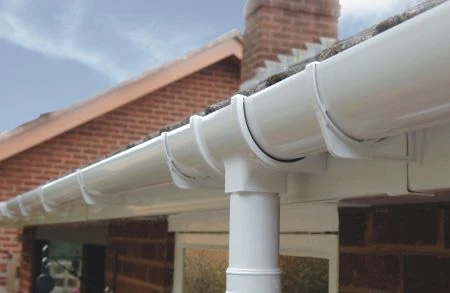The Guide To Gutter Replacement In 2025
Gutter Replacement: Why, When, and How to Do It
Gutters play a vital role in the integrity of a home’s exterior, directing water away from the roof, walls, and structure. Nevertheless, similar to any part of a home, gutters can use out gradually, resulting in the need for replacement. This post aims to provide house owners with detailed info concerning gutter replacement, consisting of signs of wear, different types of gutters offered, replacement treatments, and FAQs to help make notified decisions.
Comprehending Gutters and Their Importance
What are Gutters?
Gutters are narrow channels that run along the edge of the roof. They collect and direct rainwater far from your home to prevent water damage. Appropriately operating gutters help to:

- Prevent basement flooding
- Protect siding and windows
- Protect landscaping
- Prevent mold development
Why is Gutter Replacement Necessary?
Gutters can struggle with different issues gradually due to direct exposure to the aspects. Their materials can rust, clog, and even break due to extreme weather condition conditions. Regular assessments can assist to recognize when they require to be fixed or replaced.
Indications You Need Gutter Replacement
Recognizing the indications that show it’s time to replace your gutters is vital. Here are some typical indications:
Visible Damage
- Fractures and Holes: Look for visible cracks or holes that may trigger leakages.
- Rust or Corrosion: This is especially typical in metal gutters.
- Separation from your home: Gutters need to be safely fastened; if they are retreating, it might suggest a structural issue.
Functional Problems
- Overflowing Gutters: If water spills over the sides during heavy rain, this may indicate a clog or structural failure.
- Water Damage: Signs of water damage on walls and ceilings suggest that water is not being diverted away from the home efficiently.
Landscaping Issues
- Erosion and Pooling Water: If soil erosion or pooling near the foundation is obvious, the gutters may not be funneling water successfully.
Drooping or Angle Issues
- Gutters need to maintain a small slope to assist in drainage. If they appear to be drooping or irregular, they may need replacing.
Kinds of Gutters
When it concerns changing gutters, property owners have a number of choices. Comprehending the various types can assist in making an informed choice:
| Type of Gutter | Description | Pros | Cons |
|---|---|---|---|
| Vinyl Gutters | Made from PVC; light-weight and affordable | Affordable, rust-proof | Can become fragile in severe weather condition |
| Aluminum Gutters | Lightweight and resistant to rust | Versatile colors and styles | May damage easily |
| Steel Gutters | Long lasting alternative; suitable for severe conditions | Strong and lasting | Much heavier and prone to rust |
| Copper Gutters | Expensive; aesthetically pleasing | Very durable, establishes beautiful patina | High installation and product expense |
| Seamless Gutters | Custom-fitted without joints | Decreases leaks, less maintenance | Requires professional installation |
The Gutter Replacement Process
Replacing gutters can be an uncomplicated DIY job, or it can need professional help, depending upon the house owner’s ability level and safety considerations. Here’s a detailed guide to gutter replacement:
Step 1: Gather Necessary Tools and Materials
List of tools and materials to have on hand:
- New gutters (choose the type)
- Gutter wall mounts
- Screws and anchors
- Drill
- Ladder
- Safety goggles
- Level
- Determining tape
- Caulk
Step 2: Remove Old Gutters
- Thoroughly remove existing gutters from roof and fascia, guaranteeing that no damage happens to surrounding structures.
- Dispose of any particles and old gutters responsibly.
Action 3: Measure for New Gutters
- Precisely determine the length of each side of the roof to ensure the new gutters fit effectively.
Step 4: Install New Gutters
- Install the gutter wall mounts with a slight slope towards the downspouts.
- Secure the gutters in location, inspecting with a level to keep the appropriate angle.
Step 5: Attach Downspouts
- Cut sections of downspout to length and protect them to the gutters and the wall of your house, ensuring they direct water far from the foundation.
Step 6: Test for Proper Function
- Run water through the gutters to guarantee they are draining correctly and examine for leakages.
FAQs About Gutter Replacement
1. How often should gutters be replaced?Gutters can last in between 20 to
50 years, depending on material and maintenance. Routine inspections can help determine when replacement is essential. 2. Can I change gutters myself?Yes, if you have
the right tools and feel comfortable
working at heights. Nevertheless, working with professionals is suggested for safety reasons and to guarantee appropriate installation. 3. What occurs if I don’t replace my gutters?Neglecting gutter replacement can result in considerable
water damage, mold development, and costly repairs to the home’s structure. 4. Are seamless gutters worth the investment?While they might cost more in advance, seamless gutters reduce the risk of leakages and require
less maintenance, making them a rewarding financial investment. 5. How do I maintain my brand-new gutters?Regular cleaning to eliminate debris, examining for obstructions, and inspecting for damage after extreme weather condition will extend the life of your gutters. Changing gutters is an important aspect of home
maintenance that straight affects the longevity and security of the home. By acknowledging the signs of wear, RepairMyWindowsAndDoors understanding the kinds of gutters
readily available, and following the replacement process, homeowners can secure their residential or commercial property from water damage efficiently. Provided the significance of properly working gutters, timely replacement can conserve house owners considerable costs and guarantee a safe living environment.


